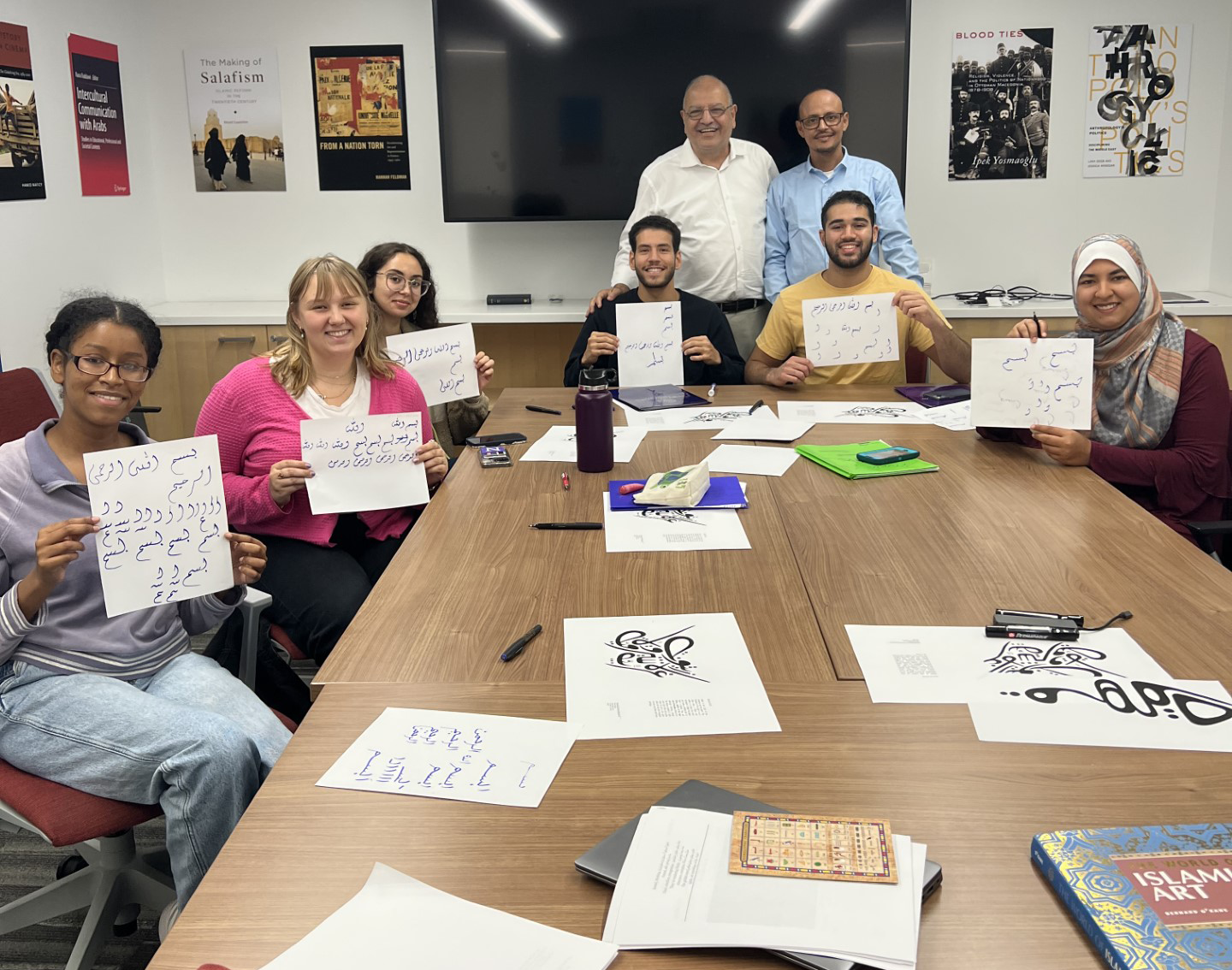Visiting Calligrapher Instructs and Inspires
Arabic calligraphy has been a fascinating activity to participate in, revealing unforeseen dimensions of learning that extend far beyond the conventional bounds of language study. Calligraphy necessitates a keen focus on the details of each letter's structure. This heightened attention necessarily facilitates a deeper understanding of the distinct shapes and configurations of Arabic letters as well as their connections and positioning. Every stroke and curve required a level of attentiveness I hadn't initially anticipated. Moreover, while I think that calligraphy is clearly artistic, its communicative value cannot be understated. Exploring different styles added a cultural dimension to my learning, broadening my appreciation for the language's roots. ”
Reem Khalid
WCAS student
From October 13 to 20, ISITA hosted visiting artist and scholar Mohameden Ahmedou. A professional calligrapher and historian of the Arabic script based in Noukachott, Mauritania, Ahmedou also helps oversee his family’s collection of manuscripts in Trarza, Mauritania. He has completed several decorated copies of the Holy Qur’an, including the Mauritanian Mushaf (the first Mauritanian printed copy of Qur’an), with a cover and extensive decorations inventively adapted from Mauritania wall art.
On October 18, Ahmedou delivered a talk at the Program of African Studies, drawing from his recent book (in Arabic, title has been translated into English), Calligraphy and Manuscripts in "Bilad Shinqit" (Mauritania): From the Origins to the Late 20th Century (Nouakchott: Islamic Republic of Mauritania, Ministry of Culture, 2020). Ahmedou communicated his deep understanding of the history and importance of calligraphic arts in this region, gained through decades of experience as a practitioner, researcher, and manuscript custodian.
Through partnership with the Middle East and North African Languages Program, Ahmedou’s visit was integrated into an Arabic language class taught by Ragy Mikhaeel: “Reading Classical Arabic Texts: Manuscripts” (Arabic 316-2), which introduces students with advanced Arabic skills to reading and studying Arabic manuscripts in seven different script styles. Ahmedou visited the class twice, providing students with a historical overview of different script styles as well as hands-on instruction in calligraphy.
Ahmedou’s productive visit was capped off by a calligraphy workshop on October 19, open to the Northwestern community. Over twenty people, including students, faculty, and staff, took up calligraphy pens and tried their hand at replicating the letters. Most found that it was more difficult than they expected to create uniformly graceful shapes, curves, and lines, but they enjoyed the opportunity to learn from a master and to gain exposure to Arabic calligraphic traditions from outside of the Middle East.
